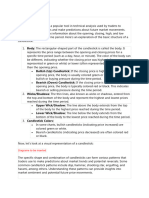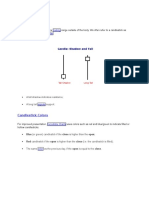0% found this document useful (0 votes)
52 views2 pagesTrading Chart Patterns
The document outlines key candlestick and chart patterns used in technical analysis for trading. It details bullish and bearish candlestick patterns, as well as various chart formations like head and shoulders, double tops, and triangles that signal potential market movements. Understanding these patterns can help traders identify potential reversals or continuations in trends.
Uploaded by
vanshbansiwal9Copyright
© © All Rights Reserved
We take content rights seriously. If you suspect this is your content, claim it here.
Available Formats
Download as PDF, TXT or read online on Scribd
0% found this document useful (0 votes)
52 views2 pagesTrading Chart Patterns
The document outlines key candlestick and chart patterns used in technical analysis for trading. It details bullish and bearish candlestick patterns, as well as various chart formations like head and shoulders, double tops, and triangles that signal potential market movements. Understanding these patterns can help traders identify potential reversals or continuations in trends.
Uploaded by
vanshbansiwal9Copyright
© © All Rights Reserved
We take content rights seriously. If you suspect this is your content, claim it here.
Available Formats
Download as PDF, TXT or read online on Scribd
/ 2

























































